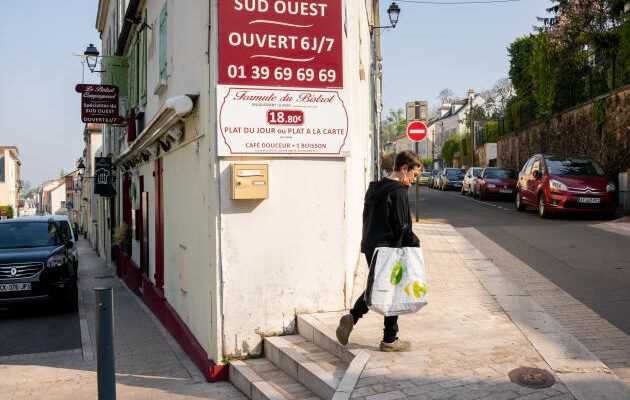ReportageFrom Chatou to Pecq, via Le Vésinet and Bougival, following the course of the Seine by bike means alternating business districts and suburban streets, flowered banks and large housing estates. And the unexpected is always at the end of the cycle path.
Leave the sparkling towers of La Défense behind, cross the residential areas of Nanterre, then breathe, finally, another air. Soon, here is the Seine, whose languid rhythm is disturbed only by the regular purring of a barge. The sun is still shy, but the birds can be heard singing, which, compared to the confined city life for weeks, provides a legitimate satisfaction.
The cycle path that runs along the river on its left bank progresses quietly to Rueil-Malmaison, in the Hauts-de-Seine, a disparate town where a tree-lined golf course with well-mowed grass, patrician villas overlooking the shore and anonymous buildings in front of which office colleagues exchange news about their children while they wait for their takeaway sushi.
Traveling in the Paris region means alternating between nature and modernity, business districts and suburban streets, large urban complexes and parks, flower-bedecked banks and vacant lots. It’s unexpected, it changes all the time, and, miracle of the bike, if such and such a place doesn’t appeal to you, you only have to pedal a few hundred meters to change the atmosphere.
For this two-day getaway about 10 kilometers from home, a good city bike is enough. The electric assistance is not essential, except to want to climb to the assault of the plates which overhang the Seine. On the other hand, it is better to equip yourself with saddlebags that will be hung on the luggage rack. Not very bulky, they replace advantageously the backpack or the shoulder strap which ends up, by force, by pulling on the shoulders and hampering movement.
On the edge of Hauts-de-Seine and Yvelines, the Parc de l’Île des Impressionnistes offers a peaceful first stop. The fruit trees give their last pink or white flowers, some joggers try their hand at the sports course. In this place, in the spring of 1881, Renoir painted, in a green setting, a piece of the Chatou railway bridge, which was taken in 1837 by the first steam train linking Paris to Pecq.
Monet and Neymar
In the Yvelines, the meander of the Seine, bordered by the forest of Saint-Germain, to the west, and the market garden of Montesson, to the north, has a long history as a rural destination. At the end of the XIXe century, artists put their easels on the banks of the river, munching on boatmen, barges loaded with firewood, poplars, a reflection on a wave. Today, in these places, panels represent the shore, spring or snowy, seen by Vlaminck, Monet, Pissarro or Turner …
You have 67.11% of this article left to read. The rest is for subscribers only.
